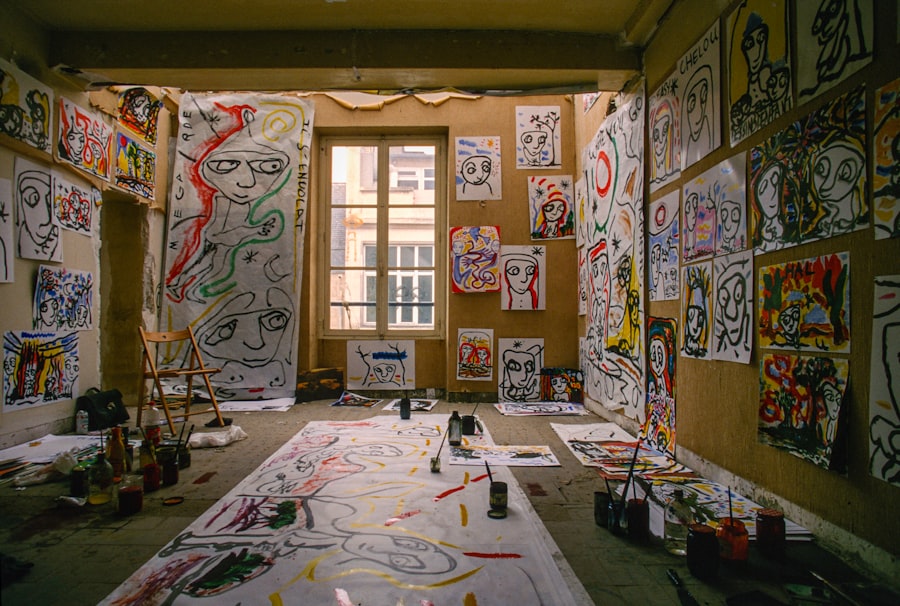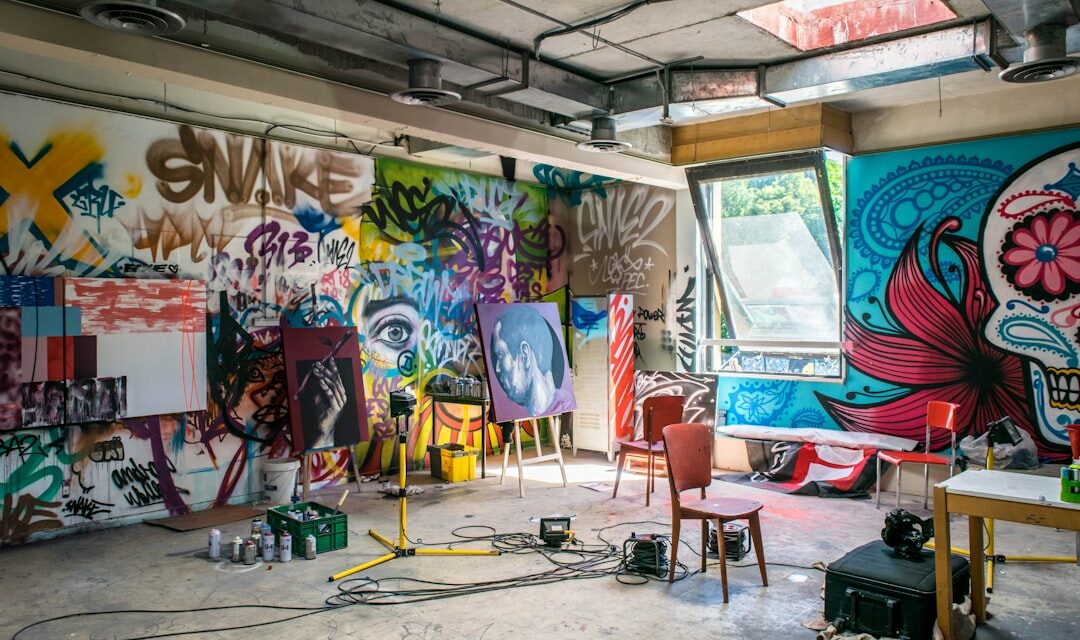Creativity is often perceived as a trait reserved for artists, musicians, and writers, yet it permeates every aspect of our daily existence. It is the driving force behind innovation, problem-solving, and personal expression. In a world that is increasingly complex and fast-paced, the ability to think creatively is not merely advantageous; it is essential.
Engaging in creative activities can enhance our emotional well-being, foster resilience, and improve our capacity to adapt to change. Whether it is through cooking a new recipe, rearranging furniture, or finding a novel solution to a work-related challenge, creativity enriches our lives and allows us to navigate the world with greater ease. Moreover, creativity serves as a vital tool for self-discovery and personal growth.
It encourages individuals to explore their thoughts and feelings, leading to a deeper understanding of themselves and their place in the world. When we engage in creative pursuits, we often find ourselves reflecting on our experiences and emotions, which can lead to profound insights. This process not only enhances our self-awareness but also cultivates empathy and connection with others.
In essence, creativity is not just an artistic endeavour; it is a fundamental aspect of being human that allows us to express our individuality and connect with the broader tapestry of life.
Summary
- Creativity is essential for problem-solving, innovation, and personal growth in everyday life.
- The creative process involves stages of preparation, incubation, illumination, and verification.
- Overcome creative blocks by taking breaks, seeking inspiration, and experimenting with new ideas.
- Cultivate creativity through mindfulness and meditation to enhance focus and open the mind to new possibilities.
- Explore different creative outlets such as writing, painting, music, and cooking to find what resonates with you.
Understanding the Creative Process
The creative process is a multifaceted journey that varies from person to person. It typically involves several stages, including preparation, incubation, illumination, and verification. During the preparation phase, individuals gather information and immerse themselves in their subject matter.
This stage is crucial as it lays the groundwork for the ideas that will later emerge. Following this, the incubation phase allows ideas to simmer beneath the surface, often leading to unexpected insights when one least expects them. This period of subconscious processing can be as vital as the active brainstorming that precedes it.
Illumination occurs when a breakthrough idea suddenly comes to light, often described as an “aha” moment. This stage can be exhilarating, as it represents the culmination of hard work and subconscious rumination. However, the final phase—verification—requires critical evaluation and refinement of the idea.
This stage is essential for transforming raw inspiration into a polished product or solution. Understanding this process can empower individuals to embrace their creative instincts and recognise that creativity is not merely a spontaneous act but a structured journey that can be nurtured and developed over time.
Overcoming Creative Blocks

Creative blocks are an all-too-common experience for artists and non-artists alike. These mental barriers can manifest as self-doubt, fear of failure, or simply a lack of inspiration. The first step in overcoming these obstacles is acknowledging their presence without judgement.
It is important to understand that experiencing a creative block does not diminish one’s abilities or worth; rather, it is a natural part of the creative journey. By reframing these moments as opportunities for growth rather than setbacks, individuals can begin to navigate through them more effectively. One effective strategy for overcoming creative blocks is to change one’s environment or routine.
A fresh perspective can often ignite new ideas and stimulate creativity. This might involve taking a walk in nature, rearranging your workspace, or even engaging in a completely different activity that allows your mind to wander freely. Additionally, setting aside dedicated time for creative exploration—without the pressure of producing something perfect—can help alleviate the weight of expectation that often accompanies creative work.
By embracing spontaneity and playfulness in the creative process, individuals can break free from their blocks and rediscover their passion for creation.
Cultivating Creativity through Mindfulness and Meditation
Mindfulness and meditation have gained recognition for their numerous benefits on mental health and well-being, but they also play a significant role in enhancing creativity. By fostering a state of present-moment awareness, mindfulness allows individuals to quiet their minds and create space for new ideas to emerge. This practice encourages individuals to observe their thoughts without judgement, which can lead to greater clarity and insight.
When we are fully present in the moment, we become more attuned to our surroundings and experiences, opening ourselves up to inspiration that may have otherwise gone unnoticed. Meditation can further enhance this process by training the mind to focus and reduce distractions. Regular meditation practice cultivates a sense of calm and clarity that can be invaluable during creative pursuits.
Techniques such as visualisation or guided imagery can also stimulate the imagination, allowing individuals to explore new concepts and ideas in a relaxed state. By integrating mindfulness and meditation into their daily routines, individuals can create fertile ground for creativity to flourish, ultimately enriching both their personal and professional lives.
Exploring Different Creative Outlets
Creativity can manifest in countless forms, each offering unique avenues for self-expression and exploration. While traditional art forms such as painting, drawing, or sculpture are often celebrated, there are myriad other outlets that can nurture creativity. Writing—be it poetry, fiction, or journaling—provides an opportunity for individuals to articulate their thoughts and emotions in profound ways.
Similarly, music composition or performance allows for emotional expression through sound, while dance offers a physical embodiment of creativity that transcends words. Moreover, engaging in hands-on activities such as cooking, gardening, or crafting can also serve as powerful creative outlets. These pursuits not only allow individuals to create tangible products but also encourage experimentation and innovation in everyday life.
By exploring various creative avenues, individuals can discover new passions and interests that may enrich their lives in unexpected ways. Embracing diversity in creative expression fosters a sense of playfulness and curiosity that can invigorate one’s overall approach to life.
Embracing Failure as a Part of the Creative Journey

Failure is often viewed negatively in our achievement-oriented society; however, it is an integral part of the creative process. Every artist has faced rejection or disappointment at some point in their journey, yet these experiences often serve as valuable learning opportunities. Embracing failure allows individuals to develop resilience and adaptability—qualities that are essential for growth in any creative endeavour.
Rather than viewing failure as an endpoint, it can be reframed as a stepping stone towards success. By cultivating a mindset that welcomes experimentation and risk-taking, individuals can free themselves from the fear of making mistakes. This shift in perspective encourages exploration and innovation, leading to unexpected breakthroughs and discoveries.
Many renowned artists have spoken about how their greatest works emerged from moments of failure or frustration. By recognising that failure is not only inevitable but also beneficial, individuals can approach their creative pursuits with renewed enthusiasm and courage.
Nurturing Creativity in Children
Fostering creativity in children is crucial for their development and future success. From an early age, children possess an innate curiosity and imaginative spirit that should be encouraged rather than stifled. Providing children with opportunities for open-ended play—whether through art projects, storytelling sessions, or imaginative games—can help nurture their creative instincts.
It is essential for caregivers and educators to create environments where children feel safe to express themselves freely without fear of judgement. Moreover, encouraging exploration across various disciplines can help children discover their unique interests and talents. Exposure to different forms of art, music, literature, and science fosters a sense of wonder and curiosity about the world around them.
Additionally, teaching children problem-solving skills through creative challenges can empower them to think critically and approach obstacles with confidence. By nurturing creativity from a young age, we equip future generations with the tools they need to innovate and thrive in an ever-changing world.
The Role of Creativity in Problem-Solving and Innovation
Creativity plays a pivotal role in problem-solving and innovation across various fields—from business to science to education. In an era marked by rapid technological advancements and complex global challenges, the ability to think creatively has never been more important. Innovative solutions often arise from unconventional thinking; thus, fostering a culture of creativity within organisations can lead to groundbreaking ideas and improvements.
Encouraging collaboration among diverse teams can further enhance this process by bringing together different perspectives and expertise. In addition to driving innovation within organisations, creativity also empowers individuals to tackle everyday challenges with confidence. When faced with obstacles or setbacks, those who approach problems with a creative mindset are more likely to devise effective solutions that may not be immediately apparent.
This adaptability is crucial in navigating both personal and professional landscapes where change is constant. Ultimately, embracing creativity as a fundamental skill not only enhances individual capabilities but also contributes to collective progress in society as a whole. In conclusion, creativity is an essential aspect of human experience that enriches our lives in myriad ways.
By understanding the creative process, overcoming blocks, cultivating mindfulness, exploring diverse outlets, embracing failure, nurturing young minds, and recognising its role in problem-solving and innovation, we can unlock our full creative potential. As we continue to navigate an increasingly complex world, fostering creativity will be vital for personal fulfilment and societal advancement alike.
If you are interested in exploring creativity, you may also enjoy reading about an introduction to the painting Flora (1559) by Jan Matsys. This article delves into the intricate details of this beautiful artwork and provides insight into the creative process behind it. It is a fascinating read for anyone looking to gain a deeper understanding of art and creativity.


